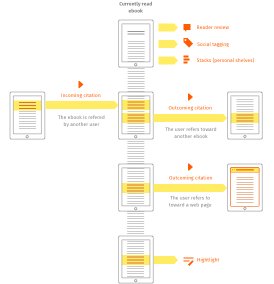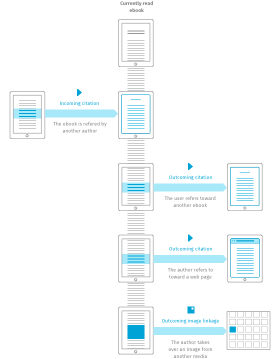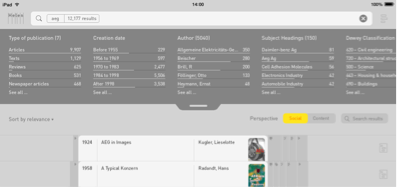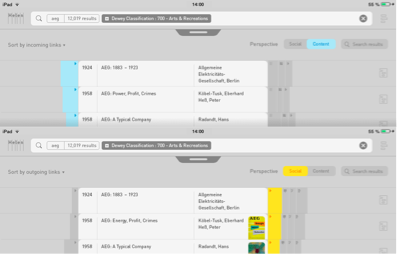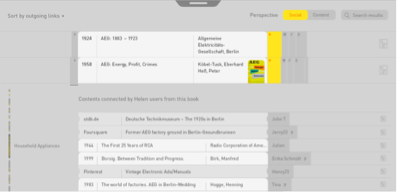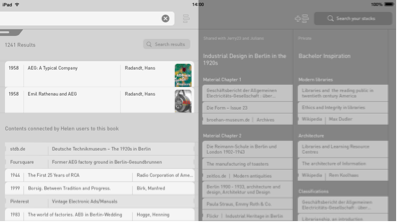Helen, the library network
When libraries embrace social networks
2013 — B.A. Thesis
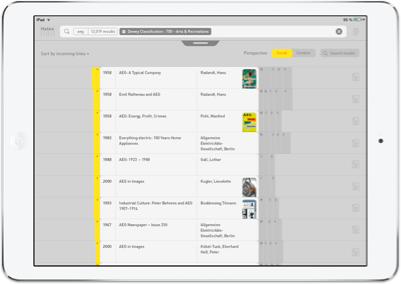
Initial situation — In the age of Google, Wikipedia and ebooks, public libraries can’t define themselves any longer as a space only dedicated to the exchange of books. They are in the urge to find a new role online that complements their physical presence.
Approach — In my bachelor thesis, I’ve investigated a way to turn the classical digital catalog into a digital network that could offer a social reading experience while retaining its classical functionalities.
Result — The result of this process is a design concept based around the idea that if the library can be considered as a network, ebooks are its nodes. In this context, the nodes are linked through authors’ citations, users’ highlights or recommendations and also allow connections with external websites.
Process
- Theoretical analysis
- Market analysis
- Use cases
- Information architecture
- Wireframes
- iPad screen design
–
Supervised by Prof. Dr. Frank Heidmann and Prof. Matthias Krohn at the University of Applied Sciences Potsdam, Germany

